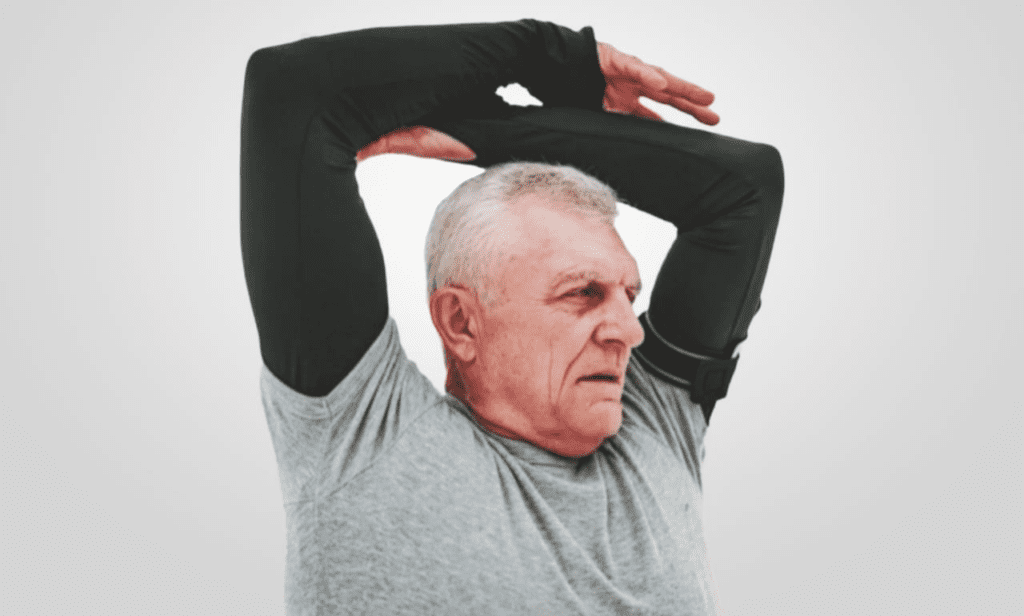
Falls among older adults aren’t just accidents—they’re often preventable crises. Every year, millions of seniors end up in emergency rooms due to falls, facing fractures, head injuries, or long-term mobility loss. While we typically focus on leg strength or vision as risk factors, groundbreaking research reveals another critical clue: the speed of arm movements. A recent study highlights that slower arm motion in seniors significantly predicts their likelihood of falling, challenging conventional prevention approaches and urging a fresh perspective on holistic balance care.
Imagine walking on a tightrope. Your arms instinctively swing to counterbalance each step, creating stability. This natural coordination diminishes with age. As joints stiffen, muscle mass declines, or neurological conditions like Parkinson’s emerge, seniors’ arm movements become sluggish. That delay isn’t just inconvenient—it sabotages the body’s emergency response system. When a trip occurs, rapid arm reactions act like “airbags,” redistributing weight to regain footing. Slower arms mean less protection. Dr. Elena Torres, a geriatric mobility specialist at Johns Hopkins, explains: “Arms are dynamic stabilizers. A millisecond lag in reaching out can turn a stumble into a collapse.”
Data from a 2025 U.S. study tracking 1,200 adults over 65 underscores this link. Participants with arm speeds 20% below average faced a 43% higher fall rate within six months. Motion-capture technology showed delayed shoulder and elbow responses during balance tests, correlating directly with real-world incidents. One participant, 78-year-old Martha, avoided falls for years despite neuropathy in her legs. After her arm mobility slowed due to arthritis, she experienced two falls in months. “My legs didn’t fail me,” she noted. “My arms just couldn’t catch up in time.”
Why do arms matter so much? Biomechanics reveals they offset “kinetic chain” disruptions. When your foot slips, your torso rotates. Fast arm swings generate torque to counteract that spin, much like a figure skater controls speed with outstretched limbs. Neurologist Dr. Rajiv Mehta compares it to a three-legged stool: “Legs, core, and arms must collaborate. Weakness in one compromises the entire structure.” Age-related changes—reduced proprioception (joint position sense), weaker rotator cuffs, or stroke-related nerve damage—all impair this teamwork. Even seniors with strong legs remain vulnerable if upper-body agility lags.
Practical screening is simpler than many realize. Experts recommend the “Coffee Cup Test”: Time how long it takes someone to reach forward, grasp a lightweight object (like a mug), and return to rest. Delays beyond 1.5 seconds signal risk. Physical therapists also observe arm swing asymmetry during walking—a telltale sign Parkinson’s specialists monitor. “It’s not about strength alone,” emphasizes Dr. Karen Li of the National Institute on Aging. “Fluidity matters. Jerky or hesitant motions indicate poor motor control.”
Prevention strategies must evolve beyond “leg day.” Resistance training targeting shoulders, biceps, and wrists builds foundational speed. Functional exercises prove most effective: catching light medicine balls, wall push-offs, or rhythmic activities like drumming. Tai Chi, endorsed by the CDC for fall prevention, trains coordinated arm-leg flow through deliberate, weight-shifting forms. Tech aids help, too. Wearable sensors (e.g., Lumo Lift) vibrate when posture hunches, reminding users to engage arms. In trials, such tools cut fall rates by 31% when paired with exercise.
Medication reviews are equally vital. Common drugs like benzodiazepines (e.g., Valium) or blood pressure pills may dampen reflexes. Dr. Torres recalls a patient whose arm responsiveness improved within weeks of adjusting his sleep medication: “We restored his body’s alertness without sacrificing rest.”
Environmental tweaks offer quick wins. Encourage seniors to keep frequently used items within “reach zones” (shoulder-to-hip height) to minimize slow overhead reaches. Nightstand water bottles or lever-style door handles reduce strain. Caregivers should also watch for subtle behavior shifts—hesitation to carry groceries or sudden reliance on armrests—which may precede falls.
The societal stakes are high. With 10,000 Americans turning 65 daily, falls cost the U.S. healthcare system $50 billion yearly. Yet research shows targeted interventions work. A Mayo Clinic program integrating arm-focused rehab slashed recurrent falls by 52% among high-risk seniors. Participant outcomes highlight human impact: after regaining arm agility through water-based exercises, 70-year-old James resumed gardening without fear. “I feel armored again,” he shared.
This science transcends individual health. Families and communities must prioritize upper-body mobility alongside traditional balance work. As populations age globally, redefining fall risk around whole-body synergy isn’t just smart—it’s lifesaving. Future prevention may include AI motion analysis via smartphone cameras, offering affordable home screening. For now, raising awareness is key. When we notice slower arm movements in loved ones, it’s not merely aging—it’s a red flag demanding action.
